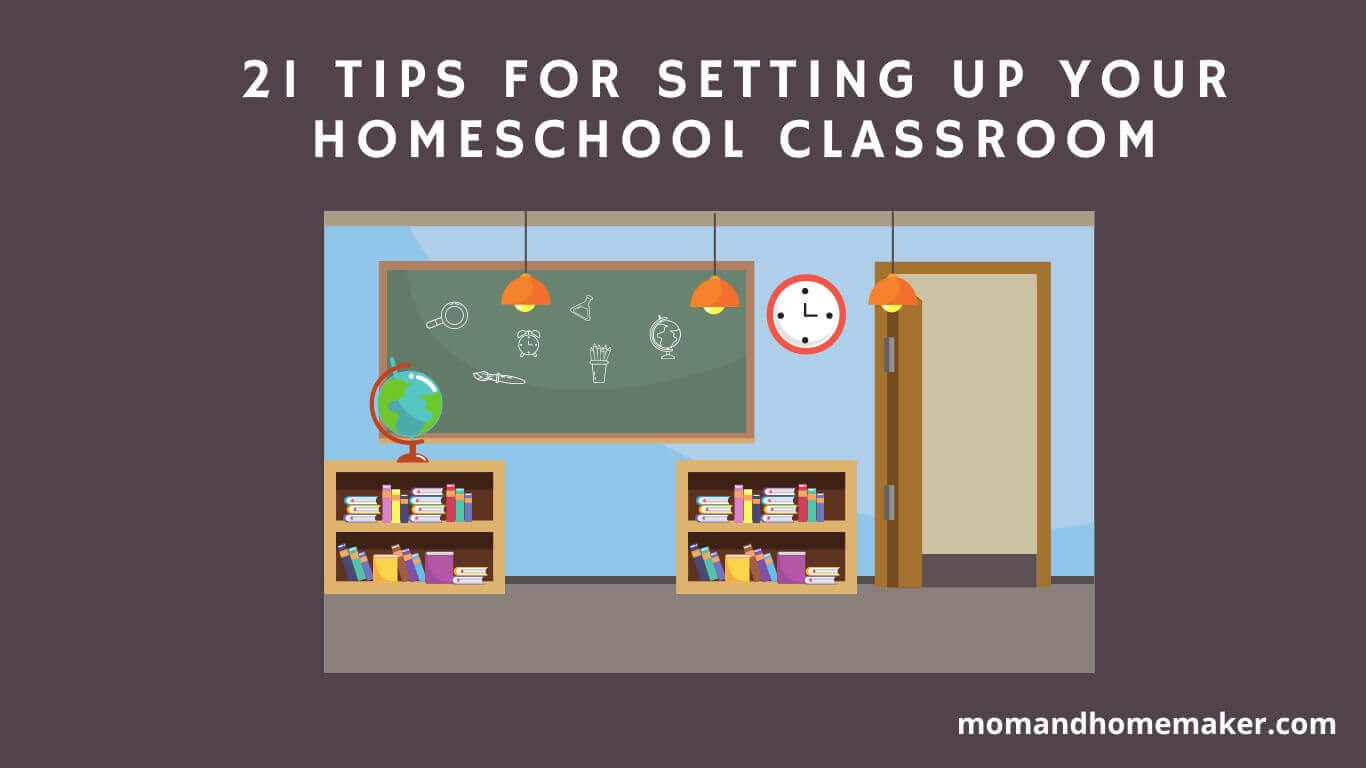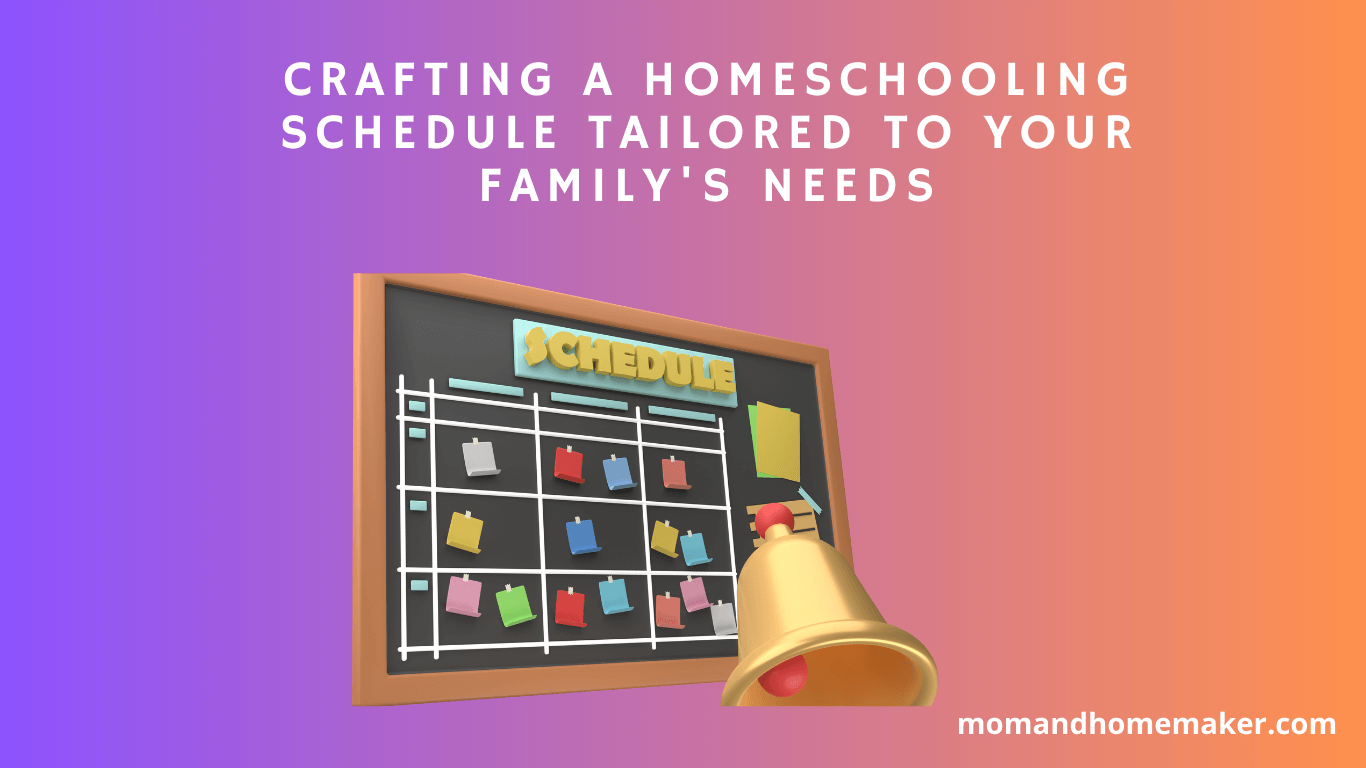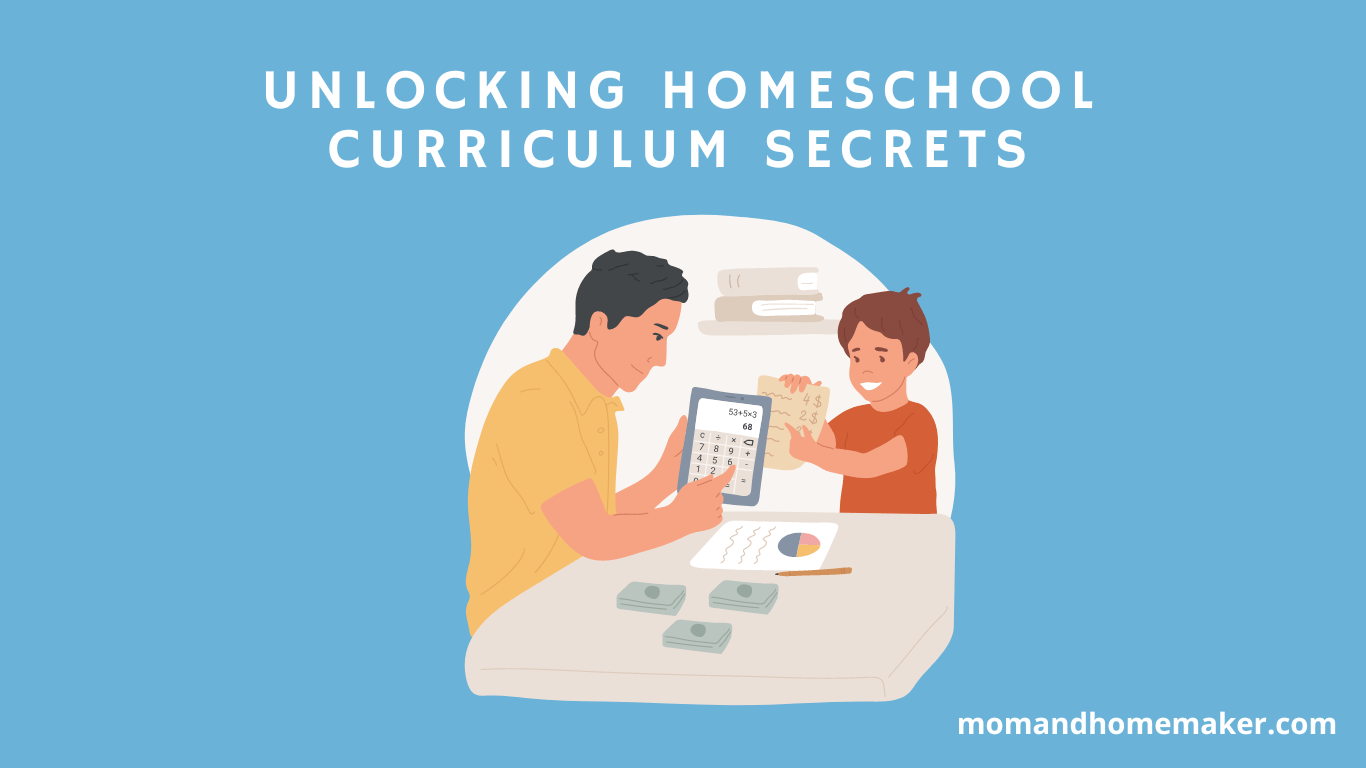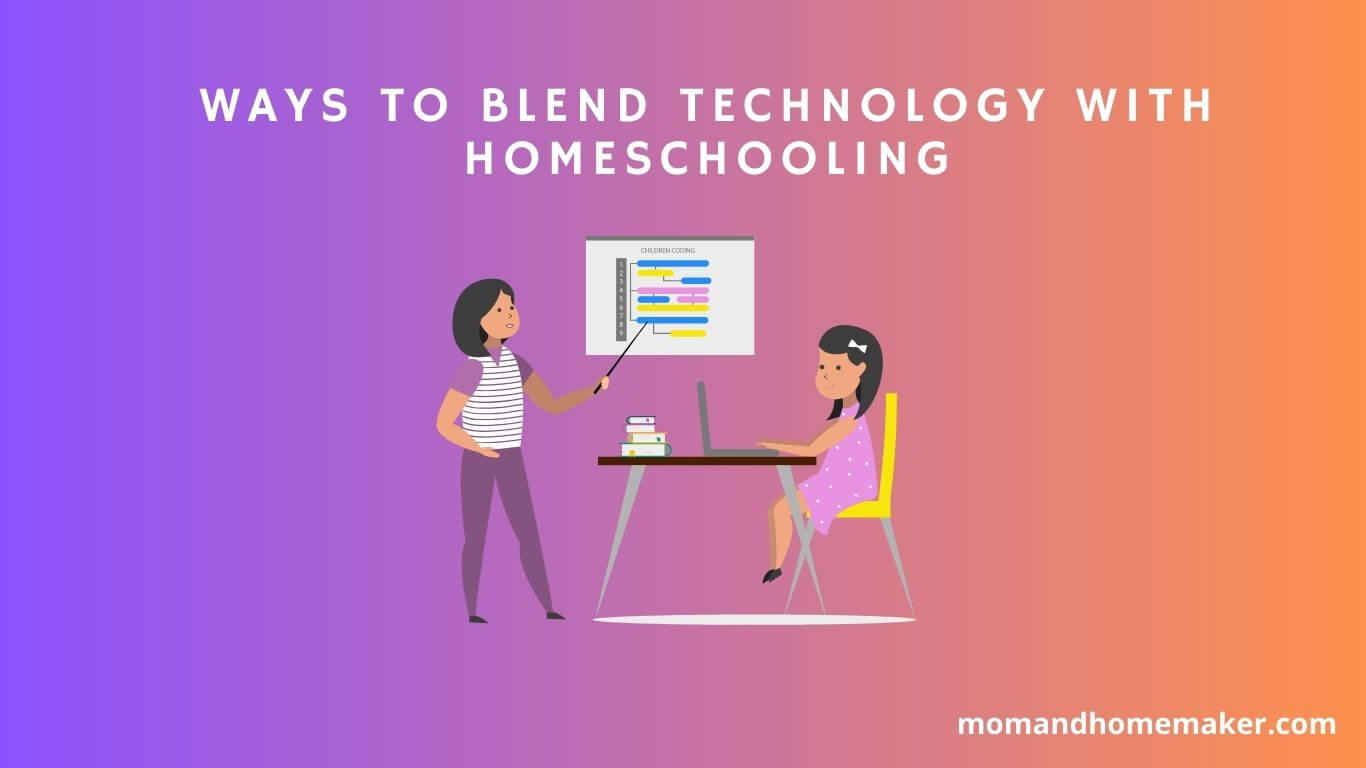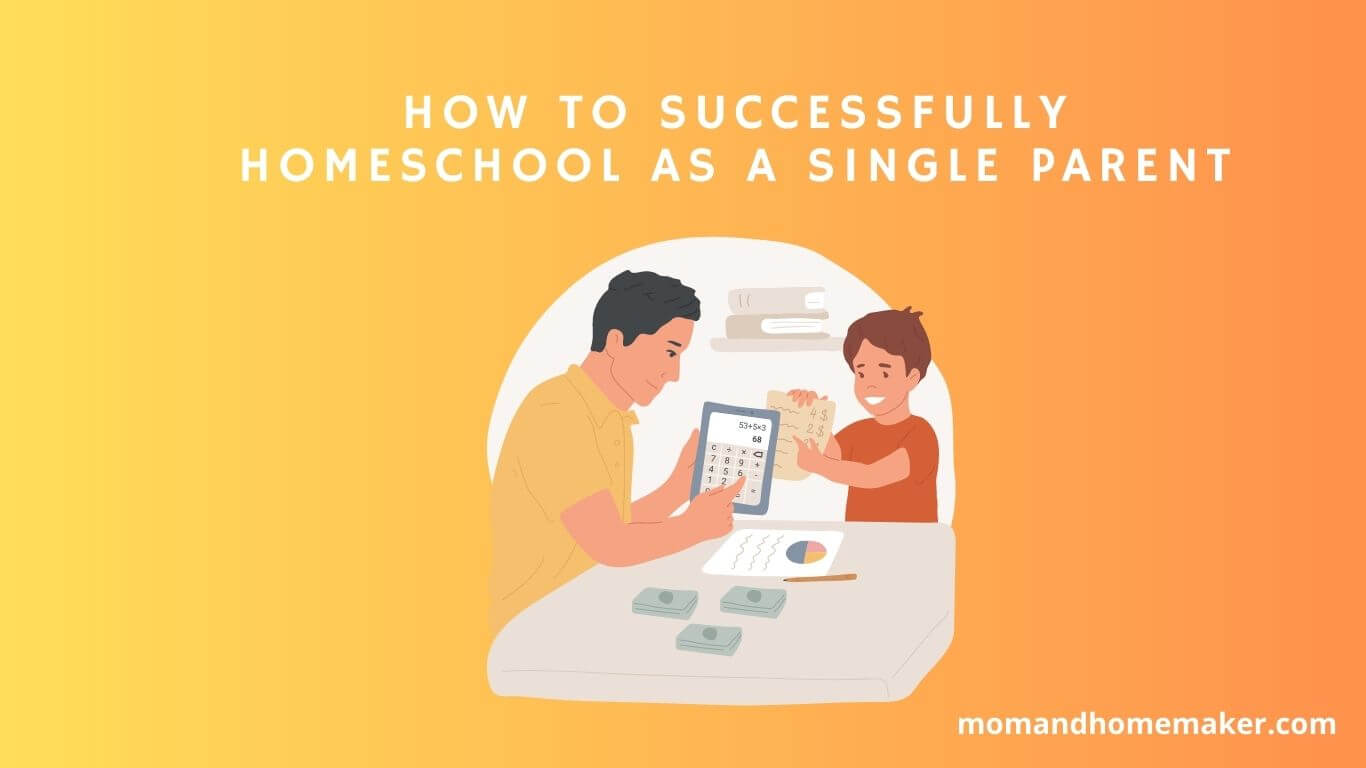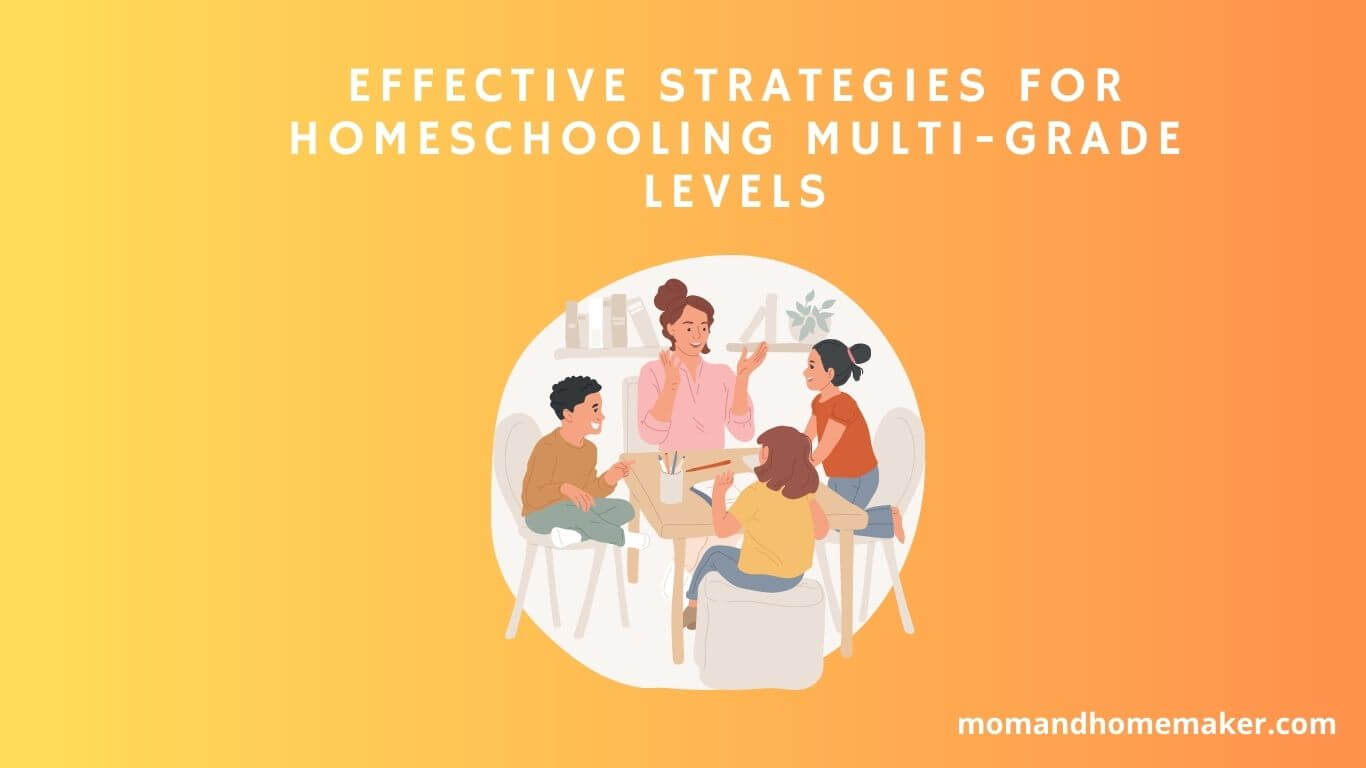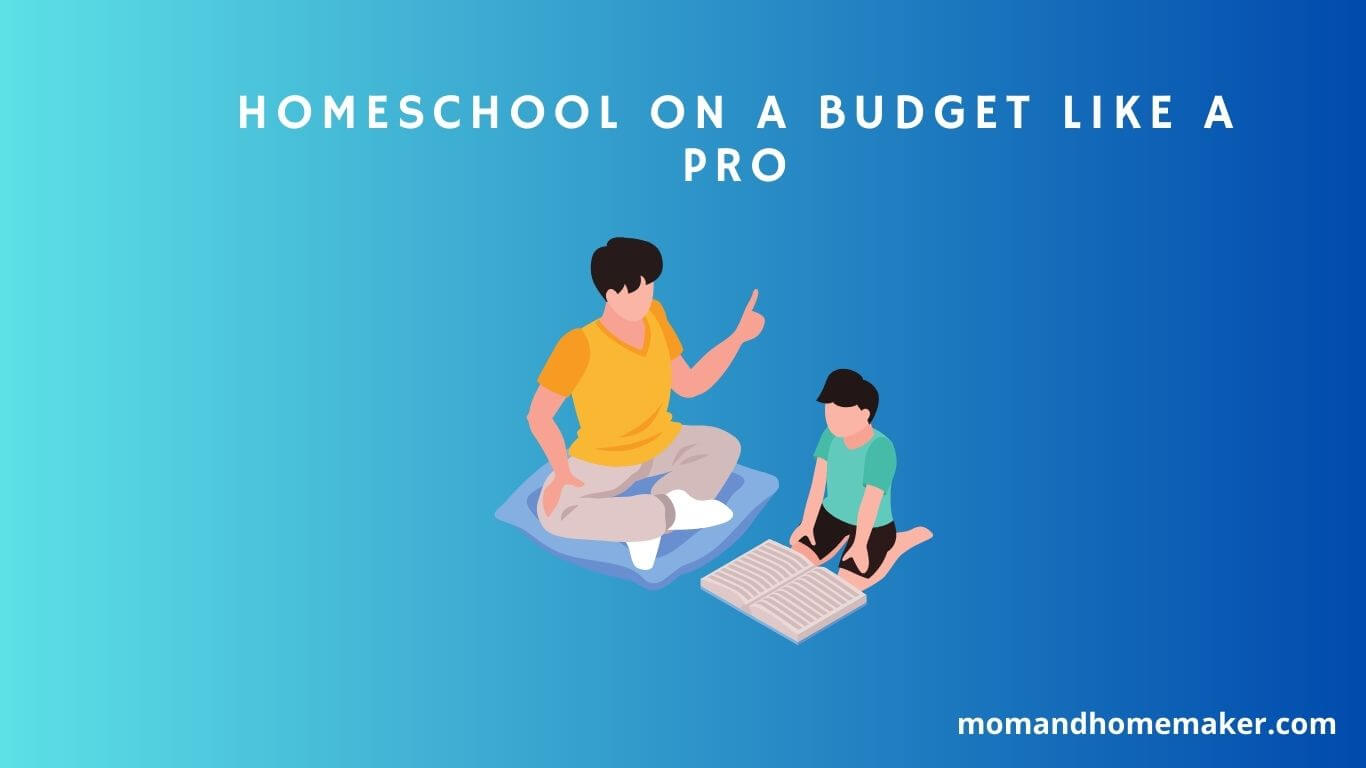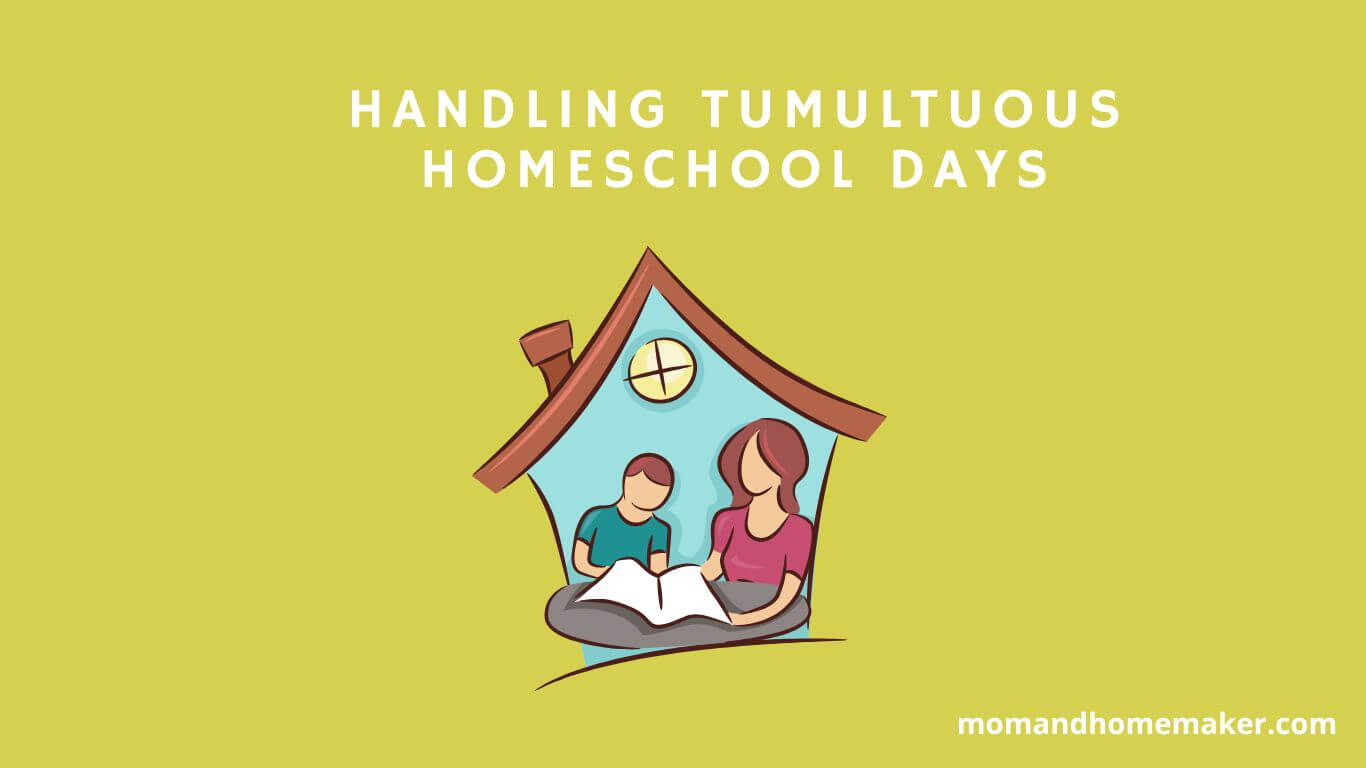As more parents turn to homeschooling their children, setting up a dedicated space for learning at home has become increasingly important. Whether you have a designated homeschool room or are working with a smaller space, creating an environment that is conducive to learning can make a big difference in your child’s educational experience.
We’ll share 21 tips for setting up the homeschool classroom that will help you create a productive and inspiring atmosphere for your child’s learning journey. From choosing the right furniture to creating a schedule that works for your family, we’ve got you covered.
Table of Contents
1. Choose the right writing surface for your child’s needs, whether that be a desk or a table.
Choosing the right writing surface plays a crucial role in the success of homeschooling. Homeschool classrooms need to have a writing surface that is both comfortable and functional for the child’s needs. Whether it be a desk or a table, parents must make sure that the height of the writing surface is appropriate for their child’s posture and comfort.
Desks provide individual workspaces, making it easier for kids who struggle to concentrate or get easily distracted. On the other hand, tables promote family togetherness and are great for group projects and collaboration. Ultimately, the right writing surface will provide a conducive learning environment that will help children stay motivated and achieve homeschooling success.
2. Make sure the writing surface is at the correct height for your child’s posture and comfort.
When setting up a homeschool classroom, it is important to make sure that the writing surface is at the correct height for your child’s posture and comfort. A desk that is too high or too low can lead to poor handwriting, discomfort, and fatigue. It is recommended to choose an adjustable desk or table that can grow with your child to accommodate their changing needs.
When your child is sitting in their chair, the height of the desk should be about 1-2 inches taller than their elbows. This will allow for a comfortable and efficient writing posture, helping to prevent strain or injury. A well-planned homeschool room setup can make a big difference in your child’s learning experience and success.
3. Consider an adjustable desk or table to accommodate your child’s growth.
It is important to consider an adjustable desk or table when setting up a homeschool room. Children grow quickly and their workspace needs will change over time. An adjustable desk or table can accommodate their growth and ensure they have a comfortable and ergonomic workspace. This will help them focus on their learning and avoid discomfort or injuries caused by poor posture.
Adjustable desks and tables can adapt to different learning activities. Whether your child is reading, writing, or using a computer, an adjustable workspace promotes good habits and enhances their overall learning experience. Consider investing in an adjustable desk or table to provide your child with a flexible and sustainable workspace.
4. Keep the writing surface clutter-free to minimize distractions.
When setting up a homeschool classroom, it is important to keep the writing surface clutter-free to minimize distractions. Homeschool parents should limit the number of supplies on top of the desk and keep it as clutter-free as possible, except for the supplies needed for the current assignment. A clean and organized writing surface can help kids concentrate and stay focused on their schoolwork.
This can lead to better handwriting and longer periods of writing without getting tired. It can help promote a sense of calm and order in the classroom, making it a more conducive learning environment for both parents and children alike.
5. Provide alternate writing surfaces, such as clipboards or lap desks, for flexibility.
One key aspect of setting up a homeschool classroom is providing alternate writing surfaces for your child. Clipboards or lap desks can offer flexibility to work in different locations and spaces, such as lying on the floor or sitting outside. This can be especially helpful for children who may need a change of scenery or position to stay focused and engaged.
It also provides options for children who may prefer to work independently in a quiet space or need a break from sitting at a desk or table. By incorporating alternate writing surfaces into your homeschool room setup, you can help your child learn in a way that is comfortable and conducive to their individual learning needs.
6. Invest in comfortable and supportive chairs for your child’s workspace.
Investing in comfortable and supportive chairs for your child’s workspace is crucial for a successful homeschool room setup. A chair that is comfortable to sit in for long periods of time and encourages good posture will make homeschooling much easier for your child. The height of the chair is also important, as your child should be able to rest their feet on the floor and have their hips, knees, and ankles at 90-degree angles.
Choosing the right-sized furniture for your child will mean less fighting and resistance during their lessons. Overall, providing a comfortable and supportive chair will help your child stay focused and motivated throughout their homeschooling journey.
7. Ensure the chair is at the right height for your child’s posture and comfort.
It is important to ensure that your child’s chair is at the right height for their posture and comfort when setting up a homeschool station. According to Dr. Bren Boston, a board-certified physiatrist, a child’s chair height should allow their knees to be bent at 90 degrees and their feet flat on the ground to promote good posture.
Their screen should be at eye level to prevent neck strain. Comfortable seating is also important for reading or relaxing, and alternative seating options such as balance balls or foot fidget bands can help children who have trouble concentrating while sitting still. By paying attention to ergonomics, parents can help their children have a productive and comfortable homeschooling experience.
8. Consider other comfortable seating options for reading or relaxing.
It’s important to consider other comfortable seating options when setting up a homeschool room. While a desk or table may be necessary for certain activities, having alternative seating options can be beneficial for reading or relaxing breaks. Bean bag chairs, floor pillows, or even a cozy reading nook can provide a comfortable, inviting atmosphere for children to unwind and enjoy their reading time.
It’s important to choose seating that is appropriately sized for your child to avoid discomfort or posture issues. By incorporating additional seating options in your homeschool room, you can create a more relaxed and enjoyable learning environment for your child.
9. Create a designated space for supplies to keep them organized and easy to access.
Having a designated space for school supplies is crucial in maintaining an organized homeschool classroom. It makes it easier for both parents and children to find the materials they need for each lesson and reduces the risk of supplies getting lost or misplaced. Utilizing storage containers or baskets can help keep smaller supplies like pencils, erasers, and markers organized and easily accessible.
Bookshelves or bookcases can be used to store textbooks and reading materials. A pegboard can be installed above the workspace to keep frequently used items within reach. By creating a designated space for supplies, homeschooling sessions can run smoothly and efficiently, allowing for more productive and enjoyable learning experiences for everyone involved.
10. Use bookshelves or bookcases to store textbooks and reading materials.
Having a dedicated space for homeschooling is important for creating a productive and organized learning environment. Using bookshelves or bookcases to store textbooks and reading materials is one essential component of a well-planned homeschool room setup. These storage solutions not only keep books neatly organized, but they also free up valuable tabletop space.
By having a designated place for textbooks and reading materials, it becomes easier for both parents and children to find the materials they need for lessons. Additionally, bookshelves or bookcases can add an aesthetically pleasing element to the room while promoting a love of reading and learning.
11. Utilize storage containers or baskets to keep smaller supplies organized.
Storage containers and baskets are a great way to keep homeschool supplies organized. By utilizing these storage options, homeschooling parents can easily locate the supplies they need for daily activities. A homeschool classroom can become cluttered very quickly, and smaller supplies can easily get misplaced. With storage containers and baskets, it becomes easy to keep track of these items. It is also important to assign a specific basket to each child to keep their current curriculum organized.
This helps avoid any confusion regarding which books or supplies belong to which child. By implementing storage containers and baskets in the homeschool classroom, parents can create a more efficient and organized learning environment for their children.
12. Hang whiteboards or corkboards for notes and reminders.
One of the 21 tips for setting up your homeschool classroom is to hang whiteboards or corkboards for notes and reminders. Having a designated space for important information can help keep track of daily schedules, assignments, and deadlines. This is especially important for larger families or multi-grade classrooms. Whiteboards can be used for writing out math problems or drawing diagrams, while cork boards can be used for displaying artwork or important papers.
These tools can also be a great way to encourage organization and responsibility in children. Overall, the use of whiteboards and cork boards can be a helpful addition to any homeschool room, providing a visual aid for both parents and kids alike.
13. Make use of natural light or provide adequate lighting for the workspace.
It is important to make use of natural light or provide adequate lighting for a homeschooling workspace. Natural light can provide a refreshing and energizing atmosphere, while proper artificial lighting can reduce eye strain and help maintain focus. Inadequate lighting can be detrimental to a child’s learning experience as it can cause headaches, eye fatigue, and reduce productivity.
When setting up a homeschooling room, it is essential to consider the placement of windows, curtains, and blinds for natural lighting, as well as the installation of proper artificial lighting and desk lamps. Parents and caregivers can make sure that the room is well-lit to ensure a comfortable and productive learning experience for the child.
14. Incorporate calming colors or decor for a soothing learning environment.
Incorporating calming colors or decor in your homeschool classroom can create a soothing environment for your child to learn in. Research shows that certain colors, such as blue and green, have a calming effect on the brain and can promote focus and relaxation. To create a calming atmosphere, try painting the walls a soft shade of blue or green, or adding in some natural elements like plants or a small fountain.
Keep clutter to a minimum and opt for soft lighting instead of harsh fluorescent bulbs. By incorporating calming colors and decor, your child can feel more comfortable and less stressed while learning at home.
15. Encourage your child’s creativity with art supplies or a designated art area.
Encouraging a child’s creativity is an essential part of homeschooling. Setting up a designated art area or providing art supplies is an effective way to do this. By having a space where they can freely express themselves, children can develop their creativity and imagination. Having access to quality art supplies can also improve the quality of their artwork.
Parents can choose materials that are easy to use and age-appropriate. Giving children the freedom to choose their own art projects and mediums can also help them discover their strengths and interests. Overall, incorporating art into the homeschool curriculum can unlock a child’s creativity and enhance their overall learning experience.
16. Utilize technology, such as a computer or tablet, for online learning resources.
Utilizing technology in homeschooling has become increasingly important in the modern age. Homeschooling families can take advantage of a variety of online learning resources on computers or tablets to supplement their curriculum.
Platforms like Epic, offer thousands of e-books and audiobooks for children of all ages. Mystery Science provides engaging videos and hands-on activities to make science come alive in the classroom. Spelling City and Boom Learning offer interactive and fun learning games that make spelling, vocabulary, phonics, and other subjects enjoyable and engaging.
These programs not only make homeschooling more effective and efficient but also open up a vast world of knowledge and resources for families to explore.
17. Incorporate hands-on learning materials, such as manipulatives or educational toys.
Incorporating hands-on learning materials such as manipulatives or educational toys can be an effective way to enhance your child’s learning experience. Research suggests that interactive learning, or learning through exploration and experimentation, can increase retention and understanding of the material.
Manipulatives, such as blocks or counting chips, can help children learn mathematical concepts in a tactile way. Educational toys, such as science kits or puzzles, can facilitate learning in a fun way. By including these materials in your homeschooling environment, children can engage in more active learning and have a greater sense of ownership over their education.
18. Provide a designated space for physical activity or exercise breaks.
It’s important to incorporate physical activity into a homeschooling routine, and providing a designated space for exercise breaks can be helpful. This space doesn’t have to be large or elaborate, but it should be a safe and open area where the child can move freely and actively. Whether it’s a quick dance break, jumping jacks, or stretching, physical activity can help students release energy and increase focus when they return to work.
Some homeschooling families even incorporate outdoor activities or sports into their daily routine to promote physical fitness and overall health. By providing a designated space for physical activity, homeschooling parents can help their children stay active and engaged in their education.
19. Use noise-canceling headphones or a white noise machine for focus and attention.
When setting up a homeschool space, it is important to create an environment where everyone can focus and eliminate any distractions. One way to achieve this is by using noise-canceling headphones or a white noise machine. These tools can help students who are sensitive to noise or who have trouble concentrating.
Noise-canceling headphones can block out external sounds and create a more controlled, focused environment. White noise machines can also be helpful in drowning out other noises and creating a soothing atmosphere. By using these tools, students can concentrate better and achieve academic success in their homeschooling environment.
20. Incorporate plants or natural elements for a calming and refreshing atmosphere.
Incorporating plants or natural elements in your homeschool classroom can create a calming and refreshing atmosphere. Studies have shown that indoor plants can improve air quality, reduce stress, and boost productivity. Natural elements like rocks, shells, or pine cones can add texture and interest to the room.
You can use indoor plants like spider plants, peace lilies, and snake plants that are easy to care for and can thrive in low-light environments. Natural elements can be used to create sensory bins or as decorative elements. Not only do they enhance the aesthetic appeal of the room, but they also provide opportunities for engaging learning activities and bring a bit of the outdoors inside.
21. Personalize the workspace by allowing your child to display their work or artwork.
One great tip for setting up a homeschool classroom is to personalize the workspace by allowing your child to display their work or artwork. This not only promotes a sense of ownership and pride in their space, but it can also serve as a visual reminder of their accomplishments and progress. By displaying their work, your child can see how far they have come and be motivated to continue learning.
You can dedicate a wall or bulletin board for their work, or even incorporate their creations into the decor of the room. This can also be a great way to involve your child in the setup process and make the space feel like their own.
Importance of a well-planned homeschool room setup
A well-planned homeschool room setup plays a crucial role in ensuring a productive and successful learning experience for students. Having a dedicated space for learning creates a clear boundary between school and home life, helping students better focus and remain on-task during class time.
A comfortable and organized learning environment makes it easier for students to concentrate and engage with the material being taught.
And finally, having all the necessary learning materials and equipment readily available in the classroom can save time and minimize distractions, allowing students to maximize their learning potential.
A well-planned homeschool room setup promotes a more efficient and effective learning experience for both students and parents alike.
Conclusion
In conclusion, setting up a homeschool classroom can be an overwhelming task, but with the right tips and tricks, you can create an environment that is conducive to learning. By implementing some or all of the tips we’ve shared in this article, you’ll be well on your way to creating a space that inspires creativity and encourages your child’s love for learning.
Keep in mind that every family’s needs are different, so don’t be afraid to experiment and make adjustments until you find what works best for you and your child. With perseverance and dedication, you can create a homeschool classroom that not only meets your child’s educational needs but also fosters their growth and development.

